Volvo S90 Becomes Instantly Elite Sedan
By John Gilbert
ESTEPONA, Spain — A year ago Volvo replaced its aging XC90 with an entirely new SUV that ran the table of SUV-of-the-year awards. Bolstered by proper financing from its Chinese owners, plus a new plant in China and a planned one in the U.S., the iconic little Swedish company has grown far beyond its home in Gothenburg.
Only a few months after the consensus proclaimed the XC90 as perhaps the finest SUV ever built, we find ourselves searching for superlatives again, this time about where the all-new S90 plugs in among the hotly contested luxury sedan segment.
Competition includes such luminaries as BMW 5-Series, Audi A6, Mercedes E-Class, Lexus GS or LS, Acura RLX, Infiniti Q70, Jaguar XF or XJ, and Porsche Panamera. After only brief driving stints in the new S90, there seems no question it can compete with all of those established stars in performance, features and spacious comfort, and the new Volvo is unexcelled when it comes to safety, of course, and maybe also to technology.
Despite the acclaim given the XC90, Volvo knows the auto media is filled with cynics, so nothing was left to chance when the time came to introduce its all-new S90 sedan. Volvo summoned selected auto journalists to Spain, and more precisely to the Spanish Riviera. My thought is the cynics must have stayed home, because everybody I talked to was as impressed as I was about the new car.
Volvo designers took the XC90 — their “Swedish Sanctuary” — and lowered it down to sedan size, keeping the new signature grille and nose, but wrapping the same superb platform in a stylish shape with pleasing contours. It looks absolutely nothing like any previous-generation Volvo sedan, but retains a familial appearance with the XC90, while further establishing the corporation’s new direction for style.
Officially, the S90 replaces the outgoing S80 in Volvo’s lineup. A V90 station wagon accompanies the S90, with smooth lines on what is, surprisingly, 3 inches shorter than the sedan.
Under the hood and body is the same powertrain as the XC90, which means a potent, high-tech 2.0-liter, dual-overhead-camshaft 4-cylinder, which feels much larger armed with a turbocharger, and MUCH larger when fitted with both a supercharger and turbocharger for all-wheel drive. Still to come is the T8, with supercharger, turbo, and a sophisticated hybrid system running the rear wheels.
Volvo engineers stress that Mercedes, BMW, Audi, Ford, and others are also building small 4s and using turbos to bolster the power of larger displacement. True, but Volvo caught the world by surprise by vaulting to the forefront of such impressive technology.
In the S90, the optional supercharging gives the little turbo 4 startling acceleration off the line, and turbocharging allows it to mimic V6 or V8 power at higher RPMs.
“Of course we had some the normal issues during development,” said Lutz Stiegler, a high-level German engineer hand-picked to move to Gothenburg three years ago and become senior director of Volvo powertrain controls and calibration. “Since we launched the car, nothing happened to worry us any more than any previous engine.The complexity increased, but our quality also increased, and even under extreme conditions, we’ve gotten similar or better results in reliability than in our previous engines.”
Different models with different packages start with the 250-horsepower, front-wheel-drive T5 at $47,945, while the all-wheel drive 316-HP T6 version is $53,945. Volvo officials anticipate 50-50 sales between the two. Moving up to the best-appointed Inscription model fills the S90 with features and luxury and boosts the T5 sticker to $51,445 with FWD, or $57,145 for the T6 AWD.
All engine varieties are coordinated to either front or all wheels by an Aisin 8-speed automatic, which Volvo engineers claim is better for efficiency than those with more or fewer speeds, or CVT, continuously-variable transmissions. It has second-generation shift paddles mounted on the steering wheel for manual operation.
“We use an Aisin 8-speed transmission from Japan, which Volvo has been using for 41 years now,” Stiegler said. “The transmission is so important in combination with our engine, and we need extremely fast torque-reduction.”
The turbo-4 in the T5 model has 258 foot-pounds of torque with its 250 horsepower, and runs 0-60 mph in 6.5 seconds, while the supercharged and turbocharged T6 has 295 foot-pounds along with its 316 horsepower, and can burst 0-60 in 5.7 seconds. All Volvos will be powered by that 2.0 engine, and Stiegler said, “We will never again make a normally aspirated engine.” He did indicate that a new replacement for the compact S40 will be powered by a turbo 3-cylinder, which will be the 2.0 with one cylinder lopped off.
Volvos always are unexcelled when it comes to seats, and the S90’s are improved, if that’s possible, with thinner backrests but still orthopedically designed for optimal comfort and also to minimize injuries and prevent the occupant’s body from being compressed in an accident.
We were anxious enough without any distractions, but we had them, for certain. As the old Hoyt Axton song goes, “I’ve never been to Spain,” so with great eagerness I flew from Duluth to Minneapolis, to New York, and then nonstop to Malaga, Spain. There, we hopped on a charter bus and rode for an hour toward the southwest, arriving at a place called the Kempinski Resort Spa. Another hour and we’d have been at Gibralter.
When we walked into the huge Kempinski lobby, there was a new S90, parked as an indoor display to entice us a bit more. The rooms were fabulous, with balconies looking out to a courtyard with swimming pools and small food and beverage stands. Walk down another row of stairs, past the lounge chairs, and you are about 50 feet from sticking your toes into the Mediterranean. Another thing I had never done before.
A week would not have been sufficient for enjoying all that the Kempinski had to offer. We had a downtown sidewalk dinner of never-ending family-style courses that were delectable, if sometimes unidentifiable. A night of sound sleep fought off jet-lag, and the next morning, after an expansive breakfast buffet looking out on the blue-green Mediterranean, we were off in our fleet of Volvo S90 Inscriptions.
The car performed admirably, with surprising speed and cornering agility, especially while handling the Spanish freeway system and, even better, the mountain roads laid out for our prescribed course. The firmness of the new platform the S90 shares with the XC90 added to the secure, solid feeling, and the new suspension with double wishbones up front and transverse leaf or optional air-suspension at the rear aided handling.
The solid feel is part of Volvo’s traditional safety focus, a constantly evolving focus on occupant safety. The S90 is made of high grade steel, with over 30 percent of it made of ultra-high-strength steel, which is better than “very high strength,” or merely high strength. After making the car as safe structurally as it can be, Volvo now is focused on making the driver safer and easing the interaction between driver and car.
“This car has the latest active safety,” said Thomas Broberg, who is in charge of Volvo’s elaborate safety facility in Gothenburg. “With our sensors, radar, cameras and computers, this car can see and feel what the driver is doing. It is prepared for the next step of connectivity, too, and is an enabler for what you want and what you’ll need in the future.”
On our final day, we went by bus to Malaga, which is the birthplace of Picasso, and we were able to tour an old castle as well as walk through Picasso’s own hometown museum. We learned that all those weird Picasso paintings with two different-looking faces juxtaposed, represent relationships between lovers, where they blend into one unified person. I may have to take a new look at Picasso’s work — including the one we have hanging in our house!


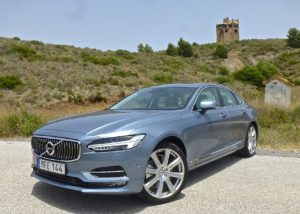
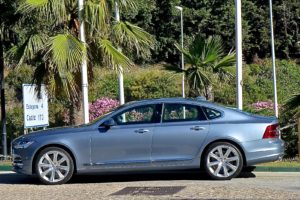
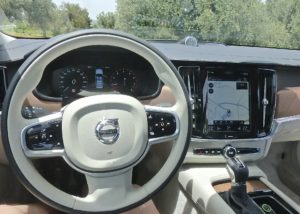
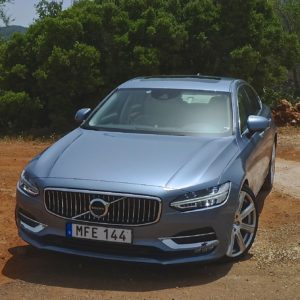
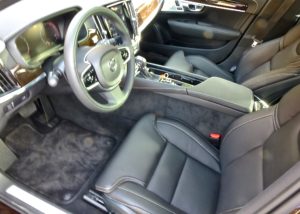


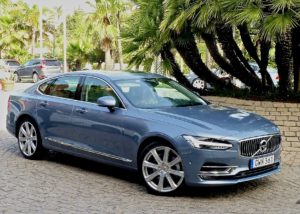
 John Gilbert is a lifetime Minnesotan and career journalist, specializing in cars and sports during and since spending 30 years at the Minneapolis Tribune, now the Star Tribune. More recently, he has continued translating the high-tech world of autos and sharing his passionate insights as a freelance writer/photographer/broadcaster. A member of the prestigious North American Car and Truck of the Year jury since 1993. John can be heard Monday-Friday from 9-11am on 610 KDAL(www.kdal610.com) on the "John Gilbert Show," and writes a column in the Duluth Reader.
John Gilbert is a lifetime Minnesotan and career journalist, specializing in cars and sports during and since spending 30 years at the Minneapolis Tribune, now the Star Tribune. More recently, he has continued translating the high-tech world of autos and sharing his passionate insights as a freelance writer/photographer/broadcaster. A member of the prestigious North American Car and Truck of the Year jury since 1993. John can be heard Monday-Friday from 9-11am on 610 KDAL(www.kdal610.com) on the "John Gilbert Show," and writes a column in the Duluth Reader.